It’s the latest buzz, right? Permaculture gardening. Maybe you’ve heard it can help you achieve more yield with less work. Perhaps you’re hearing that even though your food might be organic, it doesn’t mean it’s been grown for maximum nutrition.
So how do you ensure your vegetables are nutrient dense, with bigger yields and less time in the garden? And what is a permaculture garden, anyway?
I’m going to lay out the 5 best ways you can transition to a permaculture style garden.
Top 5 Ways to Permaculture your Garden
But first WHY should you care about growing garden? Whats the big deal?
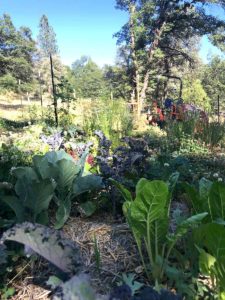 Really, a permaculture garden is about taking back control of our health, food sources, plant medicines and well-being. In our own garden, we can grow food that we know has no toxic inputs. Our well-tended gardens can grow food that is high quality and loaded with more vitamins and minerals than traditionally grown “organic” foods. What do I mean by this?
Really, a permaculture garden is about taking back control of our health, food sources, plant medicines and well-being. In our own garden, we can grow food that we know has no toxic inputs. Our well-tended gardens can grow food that is high quality and loaded with more vitamins and minerals than traditionally grown “organic” foods. What do I mean by this?
You see, a carrot isn’t just a carrot.
If the soil in which a carrot was grown lacks nutrients, minerals, amino acids and phytonutrients – well, it’s pretty easy to guess that that carrot will lack all those components as well. And isn’t that the whole point of vegetables? The vitamins, minerals and nutritional value are what our bodies need to be healthy.
There’s a simple tool called the Brix Indicator. This tool measures the sugar density in a plant that can indicate the level of overall nutrition.
The lower the number, the less available nutrients. The higher the reading indicates a healthier plant, greater nutritional value, longer shelf life and better resists pests naturally in the environment.
I don’t know about you, but if I’m eating my vegetables, I want to be sure they are giving me all the good stuff my body wants and needs!
So in our permaculture garden, all the practices combine together to bringing the most conducive growing conditions for these plants to be as healthy and full of nutritional value.
Simply put, its a method of gardening that works in alignment with nature, not against it. This means that in the permaculture garden we want to recognize and stop destructive practices such as chemical fertilizers and spraying pesticides that reduce the health of our food and pollute the environment that supports us. But beyond that, it’s a series techniques to promote the plant’s well-being, and in turn ours.
#1) Use compost and compost tea
If you are buying any fertilizer or pest control you need to ensure it’s not a by-product of the petroleum industry. These products kill soil life, kill soil life and pollute watersheds.
Instead, we want to turn to organic solutions.
Organic solutions include using large amounts of compost as the main source of food for your plants. Adding compost from different sources, such as vegetable-based and manure based, ensure that your soil is being recharged with the nutrients and minerals plants and soil life need.
In addition to feeding the roots of the plants, we can also use compost teas as a foiler spray on the leaves or at the root zone.
Here, plants are to uptake nutrients and strengthen their immune systems, thereby creating stronger, tastier and pest-resistant plants. Healthier food and fewer pests – sounds like the old saying “an ounce of prevention yields a pound of cure,” right?
#2 Use low till or no-till gardening methods
Sure, it may take time to get a garden to a place where it’s a true no-till garden – perhaps a season or two. Especially if you are just starting a new garden, you may have to till to break the capped soil surface, though there are processes like lasagna garden beds that can skirt around this.
But if you do implement an initial tilling, your goal is to move towards low till, or no-till.
Low till means, we are not putting mechanized tilling equipment deep into the soil, instead, we are using shallow tilling methods with hand tools, like a broad fork which is a gentle method for breaking apart the soil.
No-till means no additional input from you, the soil is kept in a state that is workable, enabling you to just plant.
Soil that is exposed to the elements – sun, wind, and rain – will become capped and hardened.
These attributes are not conducive to a productive garden. Moving toward no-till garden is to utilize practices such as deep mulch the beds with a material like straw or wood chips. Deep mulch meaning, several inches or more if possible.
Did you know that the soil is FULL of beneficial insects, microbes, and fungal networks?
In one teaspoon of healthy soil, there are more microorganisms than there are people on earth! Millions of species and billions of organisms—bacteria, algae, microscopic insects, earthworms, beetles, ants, mites, fungi and more—represent the greatest concentration of biomass anywhere on the planet.
This life within the soil is directly correlated with the health of our plants. Methods of gardening that use tilling every year, churn up and destroy much of this life, destroys the structure of the soil, reduces organic matter and increases erosion.
For a healthy garden, we want to disturb it as minimally as possible to keep these organisms and structures healthy and intact.
#3 Mulch, mulch, mulch
To further discuss mulching – think of bare soil as similar to an open wound on your body. That wound needs to be protected, and so does bare soil.
Deep mulching suppresses weeds, exponentially increases water retention (therefore reducing water use), allows for microbial decomposition to take place (which feeds your plants), reduces or removes the need to till and builds the soil.
Now, it’s not to say mulch is perfect, but the soil-building attributes can outweigh the problems. Yes, it can be habitat for some annoying pests, but the thing about pests is, they seek out weak and unhealthy plants. This means that the presence of pests in our garden indicates we need to focus on building healthier soils, which mulching can begin to address.
#4 Biodiversity
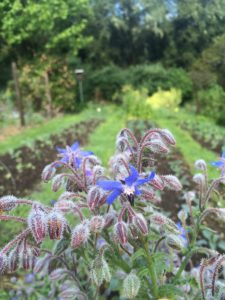 Natural systems in the ecosystem are resilient because they are biologically diverse.
Natural systems in the ecosystem are resilient because they are biologically diverse.
Meaning there are many species of microbes, insects, and many different plant species commingling to make the most conducive conditions. Similarly, in the permaculture garden, we can use methods like establishing plant guilds, companion planting and intermixing crops to mimic natural biodiversity.
To achieve this, the permaculture garden typically looks more like a wild garden than perfectly lined rows of the same plant.
This is because it’s using attributes of other plants to benefit the needs of the plants around it and vice versa.
One very common plant guild (or companion planting) is one used by the Native Americans, called the 3 sisters.
Corn, squash, and beans work in unison to provide needs for each other. The strong stalk of the corn provides a place for beans to climb. Squashes planted on the outer edges provide a dense covering of vines that help the soil retain moisture, and the beans fix nitrogen that helps feed and nourish the soil.
Another easy guild to try is tomatoes, garlic, and basil. Tomatoes have many pests that like to prey on it, so the scent of the garlic helps keep them at bay. Tomatoes and basil work together to help improve flavors, and the tomatoes provide shade for the basil’s delicate leaves. The basil itself also is a natural repellant to tomato loving pests like aphids.
You can also intersperse flowers and herbs throughout your beds to attract beneficial insects and pollinators, repel pests and add a pleasant visual diversity to your garden as well as adding biodiversity.
#5 Optimize Space
And finally, to really see big yield for minimum inputs, permaculture gardens are about maximizing space – just like nature does.
Look at a forest, do you see how many plants can exist in a single acre?
It’s because they are stacked vertically. Smaller plants are tucked under a larger plant, creating a complete ground cover in most places.
Have you wondered why weeds are in your garden? It’s because the natural ecological succession process sees the empty space and desires to fill it.
Most “weeds” are actually pioneering species that bring a quality to the soil, which help the next round of plants to flourish and grow.
So to maximize your space and keep the unwanted plants out of your garden, you can plant short crops in between tall crops, which will reduce overall space needs and provide a ground cover that aids in weed suppression.
This can also be done by looking at how slow or fast growing a plant is. For example, you can utilize the open space in-between cabbages before they grow large, by planting quick growing lettuces or other greens.
In addition, herbs and small trees can be incorporated into the garden to increase biodiversity, but they act as a placeholder keeping unwanted plants at bay.
This is just the tip of the iceberg to start turning your organic garden into a permaculture garden.
After beginning to play with these methods, you can also dive into practices like composting your own materials to feed your soil and implement rainwater harvesting or gravity-fed irrigation systems to further your permaculture homestead ideals. More post on all those to come soon.
So, what is your favorite way to add permaculture to your garden?
Let me know in the comments below!
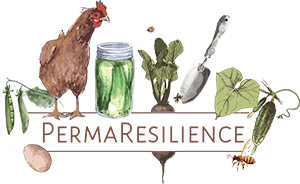


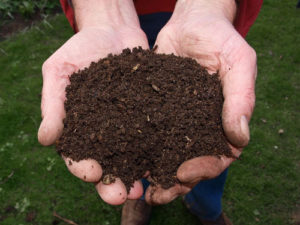

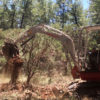

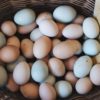


very good submit, i actually love this web site, carry on it Lelah Hewie Birch
I have a question that I’M CONCERNED ABOUT!!WE’RE YOU AFFECTED BY THE FIRES ??? MY HEART GOES OUT TO THOSE WHO HAVE BEEN.
Hey Bonnie, thanks for the concern! We are about an hour and change away from the fire, so safe but still too close for comfort.
One of my favorite methods is “Micro-Piles”. In this technique, small compost piles about three feet wide and deep are put around the garden. These then become places to put organic matter and materials. With each rain the more nutrients leach into the soil, they provide habitat for small organisms and detritovores, and they work well as a place to bury scraps. I have a small garden right outside our side door (as a part of our 23 acres) and a pile is right there. So that in any weather, I can take kitchen scraps and bury them in the pile so that they produce soil, while not being large and needing turning, or being an eyesore of kitchen scraps tossed outside the side door lol! Instead people just see a neat little pile of leaves!
Love it! Pleasing to understand, after having about 4 lectures on permaculture, it wasn’t until I found your site, actually, through this presentation, that I understood what permaculture is. The lectures I attended looked a bit like a mystical thing with people feeling uncomfortable to ask a out of a hat question. So, I do appreciate the logical progression of the explanation: really enjoy it! Thanks.
Liz